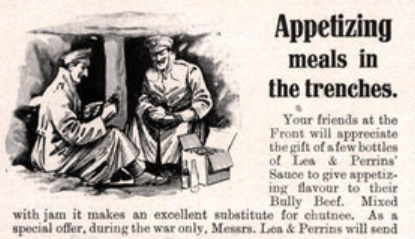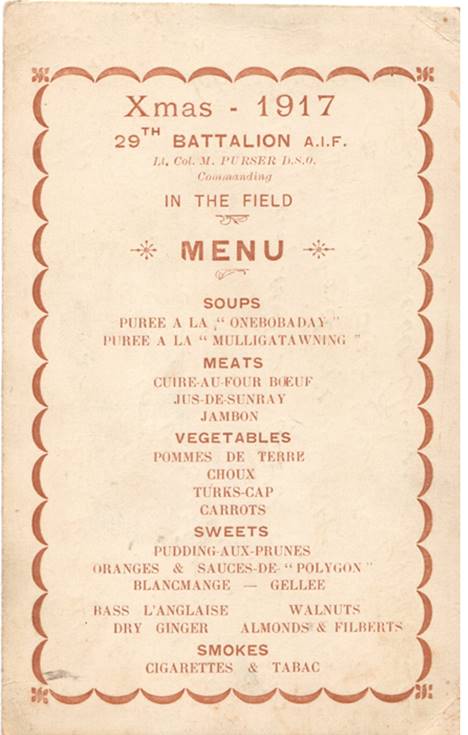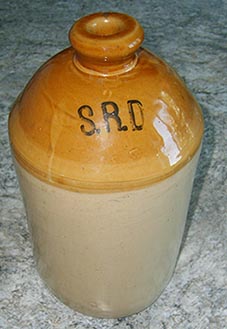Home > History > Wartime-Food
Wartime food
The population
An Australian soldier from New South Wales, based for six weeks in Vignacourt, had mentioned in a letter dated 1918 the starvation of the local population.
"It is heartbreaking to see the civilian population. They have had a very trying time for the past four years, and you can see the starvation on their faces. The restrictions and rationing of food began in the first year of the war.
Rutabagas (specific turnips) and Jerusalem artichokes were common vegetables for civilians during World War II. These substitute vegetables have benefited from a renewed interest in recent years, both on market stalls and in the young chefs' kitchens.
The army
Food rations were quite regularly distributed among the soldiers' ranks. Fresh food in the trenches was uncommon, as were hot meals. The French soldiers had also reported the vegetables' terrible condition.
The soldiers, however, benefited from quite a varied diet: potatoes, beans, bread, canned meat, and occasionally soup when it could be heated. For the army cook, the difficulty was supplying the whole unit in large quantities, sometimes at the risk of his life. The foodstuffs purchased near the stationed unit or several kilometers away have had to be transported by rail or car. Soldiers received food parcels from their relatives from time to time. (e.g., peas, tomatoes, and homemade jam).

Lea & Perrins sauce to give appetizing flavour.....
The trench stew
The recipe for trench stew has been included below to give you an idea of what soldiers would have eaten during this time.
5 minutes for the preparation and 10 minutes for the cooking.
Ingredients:
- 1 turnip
- 2 carrots
- ½ tin corned beef
- ¼ stock cube (maybe not in stock during the war)
- one or two biscuits (optional)
- 1 pint of water
The preparation:
- Put the water on to boil.
- Slice up the turnip and carrot.
- Add to the boiling water
- Add the stock and stir, then leave for 10 minutes.
- Mash up the corned beef and add it to the mixture.
- Add the biscuits and stir (optional).
This recipe was sourced from the East of England Broadband Network's Cookit website, thanks to Heather Cree.
The Christmas menu
The Xmas menu for Battalion A.I.F. shared below, shows us the ingredients available at Christmas.

Courtesy of Sally BERTRAM - CHARLES Robert Edward was a cooker.
SOUPS:
- Purée is the French word for mash, likely a thick soup, in this case.
- Mulligatawny is a soup of Anglo-Indian origin with spices like pepper and curry. There are many variations according to the ingredients available. This is, normally, hearty soup added of vegetables and or, rice, and or, meat.
MEATS:
- "Cuite au four": oven-baked for the roast beef.
- Jus de Sunray: Meat juice, ray of sunshine, this is the sauce of roasted meat.
- Jambon: Ham.
VEGETABLES:
- Pommes de terre: potatoes.
- Choux: cabbages.
- Turks-cap: illustrious strangers in our ranks. :). Probably a culinary herb.
- Carrots.
SWEETS:
- Pudding-aux-prunes: Plum pudding. There are plum trees in the Vignacourt gardens. The plum tart is a traditional dish in Northern France.
- The famous Blanc manger :) is an old French classic. A forgotten recipe by French people, reworked recently by top chefs, accompanied in this menu by the jam, red color certainly, "with jelly".
- Blanc-manger is also a recipe describes in the first French cooking book, from Taillevent. It is a dessert made from white products (poultry, fish) cooked in a broth thickened with flour, rice, and almonds ...
Salon Godbert Amiens:
The renowned restaurant Godbert in Amiens was frequented by distinguished figures such as the Mayor, Marshal Foch, the President, British officers and personalities, singers, writers, leading citizens of the Amiens region, and many others.
Classical or regional dishes of French cuisine were served, such as savory crepes named Ficelles Picardes filled with mushrooms duxelles, duck paté, sole filet, chickens of Bresse, and liquor soufflé.
The market gardens of Amiens, called Hortillonnages, near the Somme River, not far from the restaurant, allowed the supply of good vegetables. This activity has been developed since the Middle Ages, and the surface is about 1500 hectares. This number has been divided by 3, and in the early 1900s, the gardeners, called Hortillon in the region, were about 1000 people. Today just over 150 gardens remain, and an organization works to preserve this legacy.
The museum was officially opened in 2017, and you can visit the gardens in a flat-bottomed boat.
Beverage:
Tea was part of the ration for Allied soldiers, as was coffee and some wine for local soldiers. The ricqlès, mint alcohol of Dutch origin, included in the package of the French soldiers, was used as an antiseptic and made it possible to purify water to avoid digestive disorders. Several flasks were found during the exhumation of soldiers' bodies in Verdun. Beer and alcohol were supplied in the battalions' stocks, too.
Local coffee shops were places known for soldiers in the evening. You can still see these rum jars in some Picardy homes. S.R.D. for Service Rhum Diluted The manufacturer was based in the United Kingdom in Chesterfield, trading as Pearson & Co., The Potteries.

A rum jar manufactured in the United Kingdom
